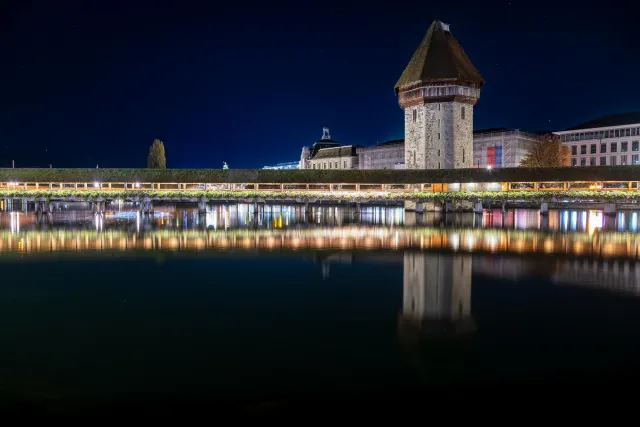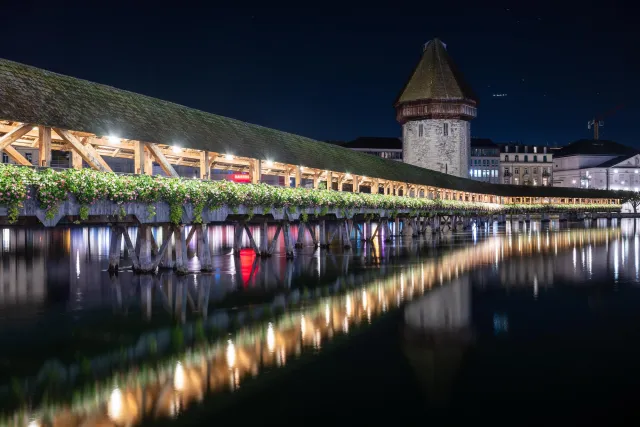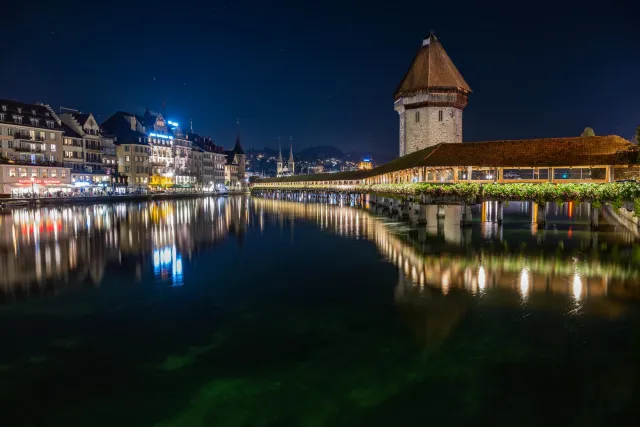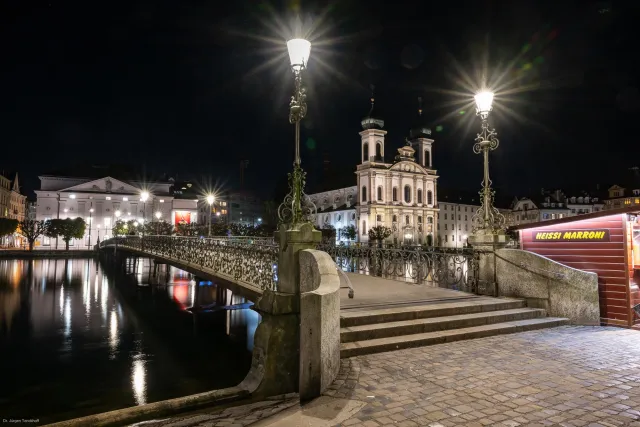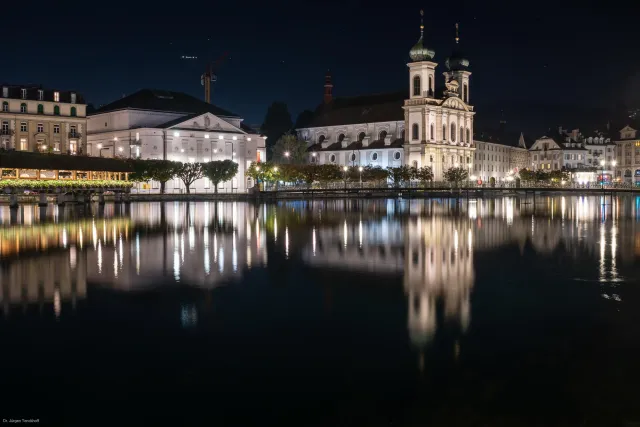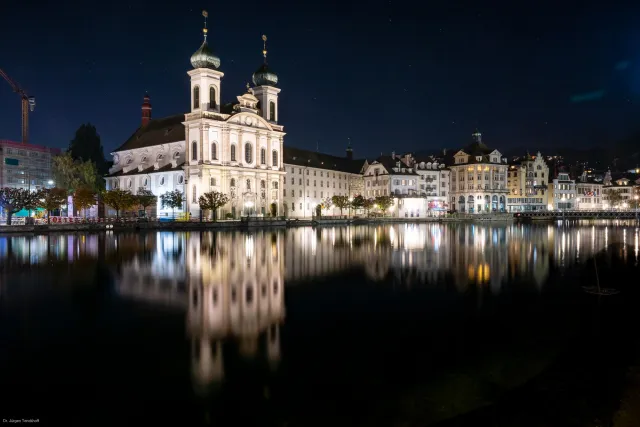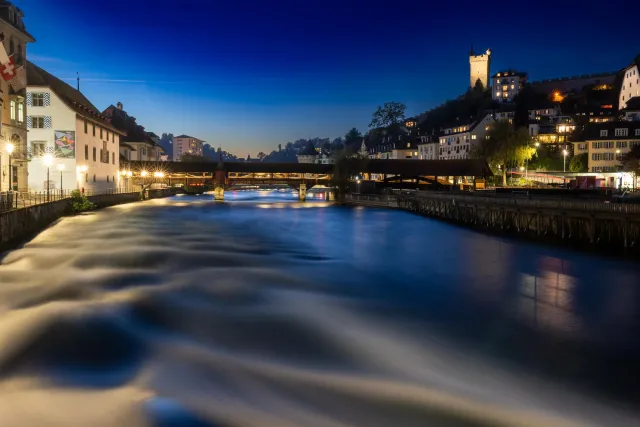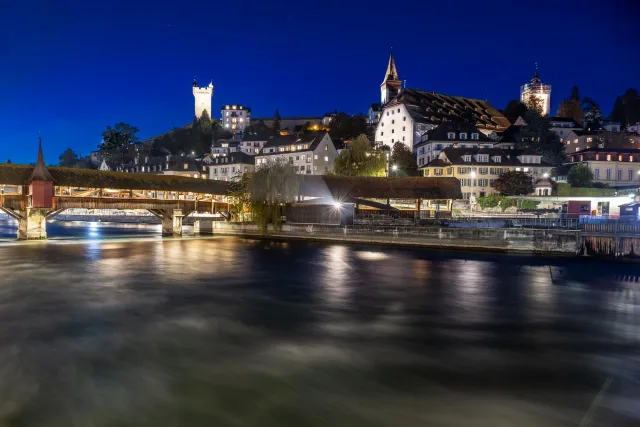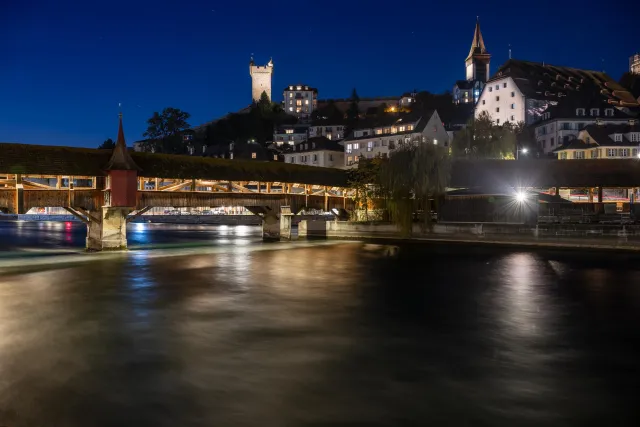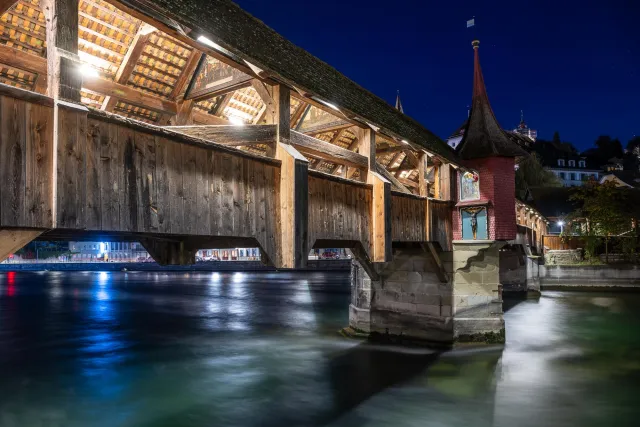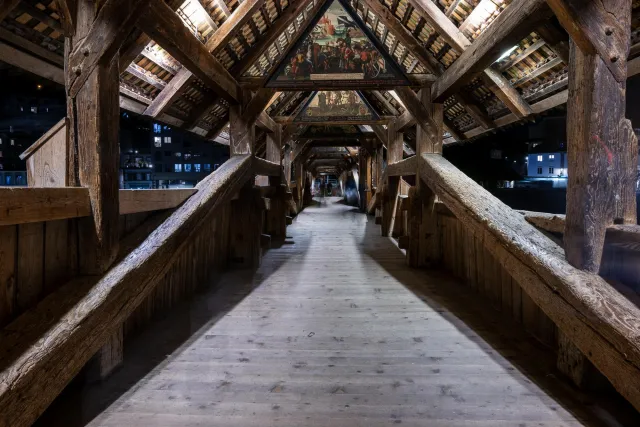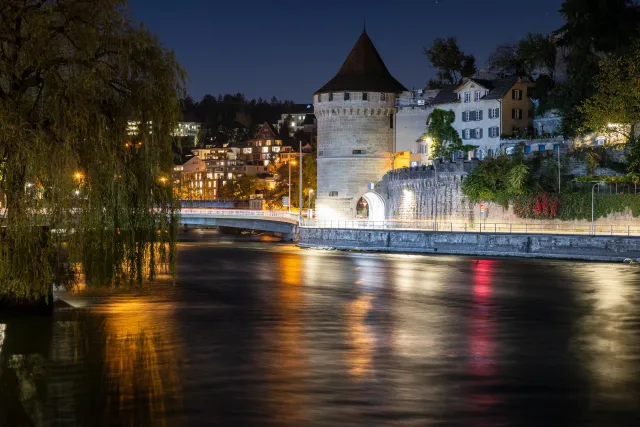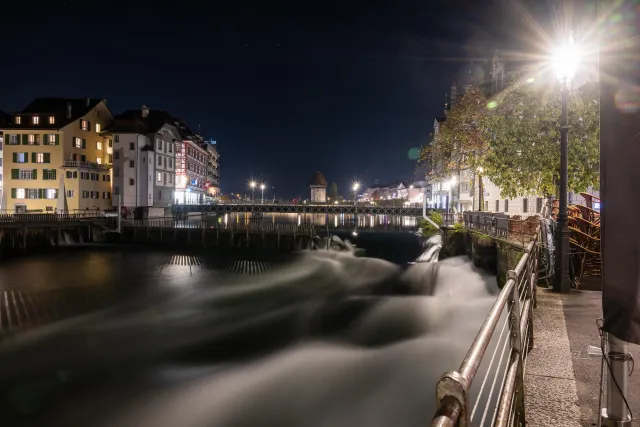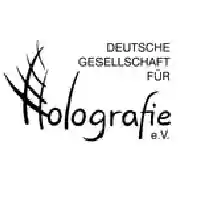As darkness falls, the bustling streets of Lucerne empty and the streams of tourists dwindle. Now the blue hour strikes, which, with its special lighting conditions, creates a special mood for photographic motifs. In favorable weather conditions, these special motifs can even be seen with their reflections in the calm Reuss. The necessary long exposures work well, for example, with Lucerne's landmark, the Chapel Bridge, the second longest wooden bridge in Europe. It connects the octagonal water tower from the 1300s with the banks of the Reuss. The tower once served as a watchtower and cornerstone of the city's fortifications, but also as a dungeon and torture chamber.
If you follow the course of the Reuss downstream, you first pass the Town Hall Bridge and then stand in front of a mighty baroque church. The Jesuit Church of St. Franz Xaver from 1667 was named after Francisco de Xavier.
Continue along the Reuss to the next wooden bridge, the Spreuer Bridge. The first bridge connected the mill square on the right bank of the Reuss with the mills in the middle of the river in the 13th century. The continuation to the left bank (Pfistergasse = bakers' quarter) was not completed until 1408. In the Middle Ages, chaff and leaves were only allowed to be thrown into the Reuss from this lowest bridge in the city.
In the gable fields of the Spreuer Bridge, 45 of the original 67 painted wooden panels with a unique dance of death can still be found today, executed between 1626 and 1632 under the direction of the painter Kaspar Meglinger. It is the most extensive and at the same time the most public of all known dances of death. The images and texts of the Lucerne death panels show that there is no place on land and sea where death is not also at home. The small bridge chapel "Maria auf der Reuss" is dedicated to the Mother of God.
After a few steps along the Reuss, the massive Nölliturm appears on the bank. It was built in 1513 and is the home of the Saffron Guild; it houses the guild room and the archive.

